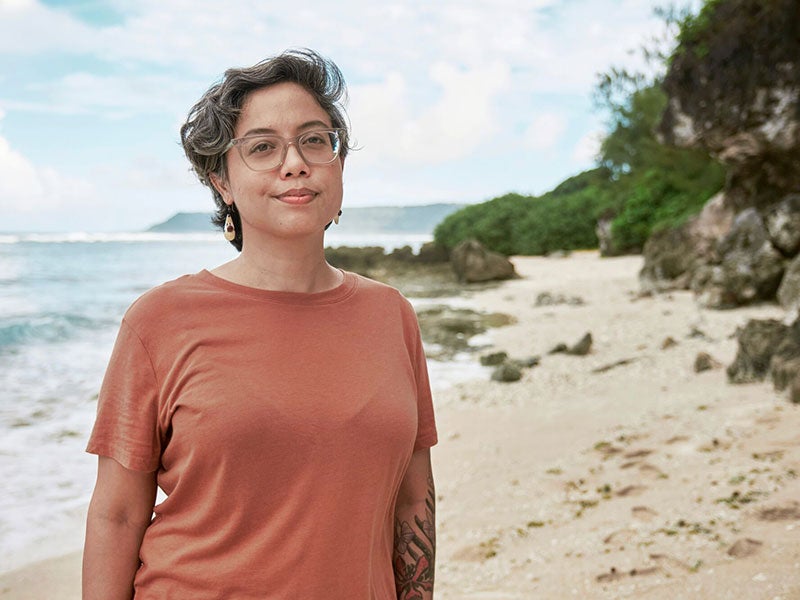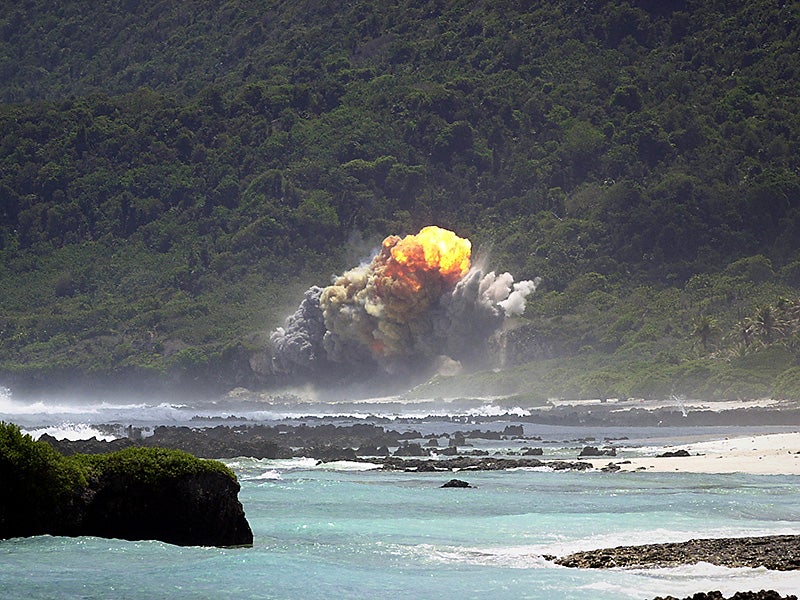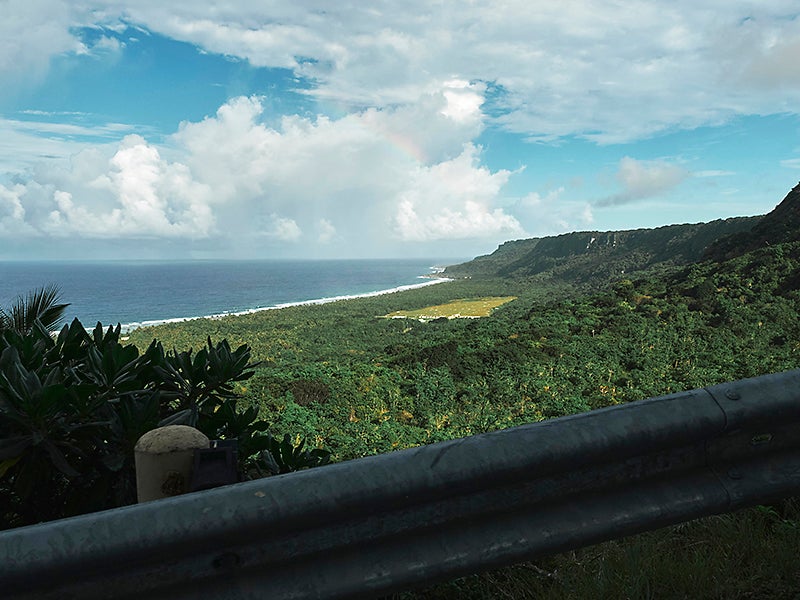Indigenous Islanders in Guam Take on the Military
Activist Monaeka Flores talks about fighting to stop the Air Force from blowing up leftover munitions on Guam's beaches.

This page was published a year ago. Find the latest on Earthjustice’s work.
The U.S. military creates a lot of hazardous waste. Its proposed solution? Burn or detonate up to 35,000 pounds of its leftover munitions each year on ancestral lands that it seized after World War II and local families seek to have returned.
This dangerous scheme is unfolding in the U.S. territory of Guam, and with the help of Earthjustice, a group called “Prutehi Litekyan: Save Ritidian” is fighting back. Led by activists from the CHamoru community, Indigenous people who have called Guam and the other Mariana Islands home for more than 3,500 years, Prutehi Litekyan is challenging the military’s efforts in court.
Group member Monaeka Flores, whose family once ranched the land next to the military’s proposed disposal site, spoke with Earthjustice in 2023 about why it’s important to stop the military’s plans — both in Guam, and nationwide. Earthjustice is supporting these efforts as part of its broader work to build an environmental movement centered in justice.
How did you learn about the military’s plan to burn and detonate its leftover munitions?
Senator Sabina Flores Perez of the Guam Legislature invited me to attend an informational briefing about the Air Force’s permit renewal application for open burning and open detonation (OB/OD) on ancestral lands in Guam. There was a short public comment period that wasn’t heavily publicized, so the issue was kind of flying under the radar.
What made you want to get involved?
I was horrified to learn about the toxic chemicals that would likely be released from OB/OD, including PFAS, which are linked to various cancers. And I was shocked that the Guam EPA said they didn’t know much about open burning and open detonation. They said that they were understaffed, and that they didn’t have enough information. It felt like they were just going to rubber stamp the Air Force’s permit application.
I also witnessed Guam EPA staff become hostile and defensive of the senator’s line of questioning. It disturbed me that someone from Guam EPA could show up at a public briefing held by the legislature and behave like that. It felt violent, really. If they can show up and talk to her like this, who’s going to hold them accountable?
What’s it like having a strong U.S. military presence in Guam?
The military occupies roughly 30 percent of the island, which is more than the local government of Guam. The military is not the best partner or steward of our land and waters, and we’ve seen multiple incidents of contamination here. In 2018, we learned that a military contractor spilled over a hundred gallons of jet fuel. It took nearly three months for them to report it to Guam EPA, and it was withheld from the public for about a year.
There have also been reports of contaminated water wells; there’s a Superfund site in Andersen Air Force Base that has yet to be dealt with; and there have been multiple desecrations of our ancestral burials and sacred sites by the military over the years, which is devastating. Every week we’re responding to something. It’s just constant, and it feels absolutely relentless.

A fireball rises above the 36th Explosive Ordnance Disposal Tarague range seconds after the detonation of an M117 bomb, as a part of the flight’s training, on Andersen Air Force Base, Guam. (A1C Joshua P. Strang / USAF)
Is open burning and open detonation a problem beyond Guam?
Though open burning and open detonation are banned in the U.S., there’s an exception for the U.S. military, and there are communities around the country that have been fighting against open burn and open detonation for decades.
It hit me that whatever we do impacts every other community confronting this issue, and vice versa. We’re fighting this environmental injustice in Guam, which is connected to environmental injustices experienced in all these different communities around the country — many of them communities of color and lower economic status. This is environmental racism.
We are constantly nurturing relationships with activists both regionally and internationally to support each other’s work and uplift each other’s voices. From Hawai’i, Puerto Rico, and Standing Rock, we’re all sharing colonial realities of oppression, and environmental injustice, and we demand protection for the planet and people. When you’re fighting against a massive institution like the military, you need as many folks as possible. There’s a lot of strength to draw from knowing how our struggles connect us and that we’re stronger together.
What’s it like taking the military to court?
I’m extremely grateful for the partnership with Earthjustice. They have a sense of urgency about what’s happening here and it’s amazing to have that kind of support from folks who don’t have any direct ties here, but who want to fight to protect our resources and our island.
It’s also a reminder for our people that this battle is a long one, and we need to prepare our future generations to continue this fight to defend our water, land, and all we hold sacred. This lawsuit has really activated people in our community because we’re the only ones who can help hold Guam EPA and the military accountable. It gives our people hope — because they’re seeing us challenge an institution that typically gets away with whatever it wants.

Tarague Beach on Guam, is part of Andersen Air Force Base where the military burns or detonates munitions. (Nathan Topasna for Earthjustice)
What does justice look like for you?
We want to see this permit rejected and the military to assess the impacts and the alternatives. But what I really hope for is that this just doesn’t happen here at all. We the Indigenous islanders deserve to be at peace in our homeland.
Ultimately, many of us dream of a free and truly liberated, independent Guam, in which the oppressive policies of a colonizer are not impacting our lives directly. Some day we want to be able to return to the lands that were taken from us, but the land must be safe enough for us to do that. This lawsuit is part of that fight because we’re trying to protect our lands and waters for all future generations, and especially with that hope that maybe one day we can return to our family lands.
Originally published on January 11, 2023. Updated to include U.S. EPA's comment period on proposed revisions to OB/OD regulations.
Established in 1988, Earthjustice's Mid-Pacific Office, located in Honolulu, Hawaiʻi, works on a broad range of environmental and community health issues, including to ensure water is a public trust and to achieve a cleaner energy future.